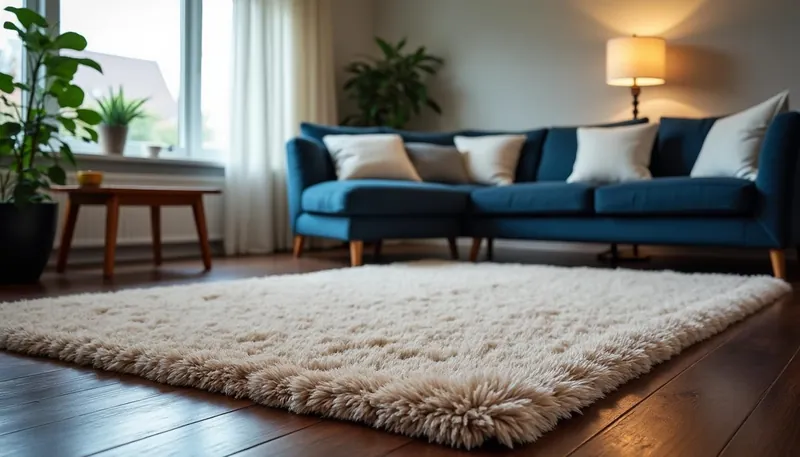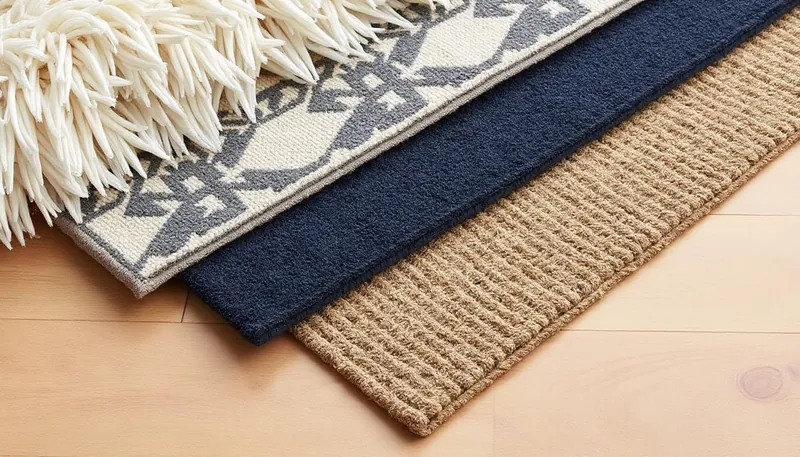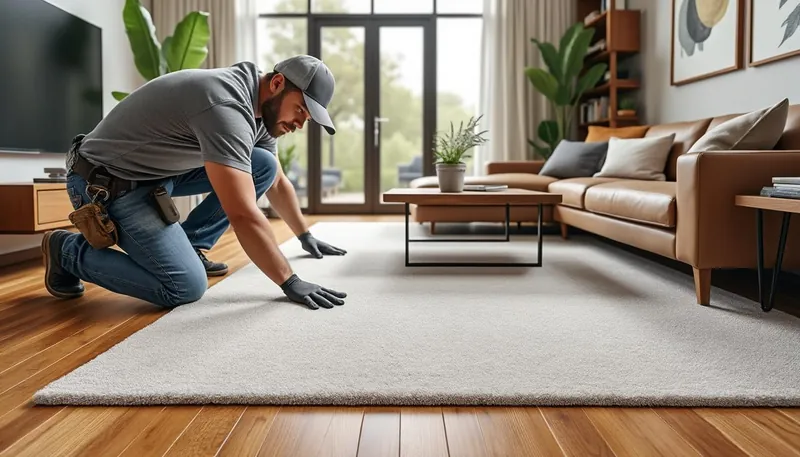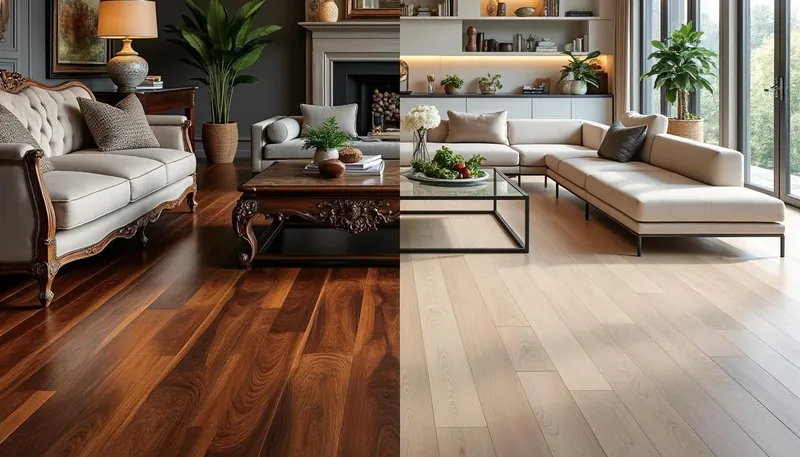In the world of home design, flooring choices often spark lively debates among homeowners. One popular query revolves around the prospect of installing carpet over existing hardwood floors. It’s a topic that stirs emotions and opinions, as hardwood offers undeniable elegance and durability while carpet brings warmth and coziness. The dilemma is more than just cosmetic—it’s about functionality, maintenance, and the future value of your home. As you consider covering those beautiful hardwood floors, several factors come into play, from the condition of the hardwood to the implications of sealing it beneath layers of carpet. Understanding the ins and outs of this decision can help you strike the right balance between style and practicality.
When thinking about installing carpet over hardwood, it’s important to weigh the potential benefits and drawbacks. On one hand, carpet can enhance comfort, reduce noise, and provide a soft feel underfoot. After all, who doesn’t love sinking their toes into plush carpeting on a chilly morning? However, there are considerations to keep in mind, such as the potential risks to the hardwood and the impact this decision may have on your home’s resale value. This isn’t just about aesthetics; it’s about ensuring that every step you take on your new carpet doesn’t jeopardize the integrity of the hardwood beneath it.
As we unpack the details surrounding the installation of carpet over hardwood, it’s essential to address key elements such as preparation, installation methods, and maintenance tips to preserve both flooring types. Whether you’re aiming for a snug retreat or simply looking to protect your hardwood investment, an informed approach will serve you well. In doing so, you’ll make a choice that aligns with your lifestyle and design preferences while also safeguarding the value of your property.
- ⭐ Enhanced comfort with carpet padding
- 🔇 Noise reduction between levels
- 🛡️ Safety improvements from slips and falls
- 🎨 Aesthetic flexibility to modernize your space
Considerations Before Installing Carpet Over Hardwood Floors
Installing carpet over hardwood isn’t just about rolling out the fabric and calling it a day; there’s a slew of considerations to address first. Here’s a breakdown of what you need to ponder before diving into carpet installation:
- Condition of the Hardwood: The first step is evaluating your hardwood floors. They should be in good shape without damage such as warping, scratches, or other flaws. Make necessary repairs prior to laying down carpet.
- Moisture Levels: Excessive moisture can lead to mold and damage. It’s crucial to assess the humidity levels in the area where you plan to install carpet to avoid future complications.
- Height Adjustments: Adding carpet will raise the floor level, potentially affecting door clearance and transitions to adjacent rooms. Make sure to measure your spaces to avoid headaches later.
- Installation Method: Different carpet installation methods can have varying impacts on your hardwood, including the choice between stretch-in, glued-down, or loose lay methods. Be informed about which is best suited for your needs.
| Consideration | Details |
|---|---|
| Condition of the Hardwood | Assess for damages, warping, or significant scratches. Make repairs before installation. |
| Moisture Levels | Evaluate and ensure the area is not overly humid to avoid mold growth. |
| Height Adjustments | Measure door and baseboard clearance to accommodate added height from carpet. |
| Installation Method | Decide on a carpet installation approach: stretch-in, glued-down, or loose lay based on your preferences. |

Types of Carpet Suitable for Hardwood Floors
Choosing the right carpet type can significantly affect both the aesthetic and functional qualities of your space. Here’s a closer look at the various options available that work well over hardwood flooring:
- Cut Pile Carpet: Known for its plush feel, it’s wonderful for living areas where comfort is king.
- Loop Pile Carpet: A more durable choice, perfect for high-traffic areas, reducing wear and tear.
- Berber Carpet: With a tight weave, it’s designed for households with pets or kids due to its resistance to damage.
| Carpet Type | Durability | Comfort Level | Maintenance |
|---|---|---|---|
| Cut Pile | Moderate | High | Regular vacuuming |
| Loop Pile | High | Moderate | Occasional vacuuming |
| Berber | Very High | Moderate | Easy to clean |

Installation Process for Carpet Over Hardwood
Ready to get those carpets laid down? It’s crucial to follow the right procedures to ensure a successful outcome. Here’s a step-by-step guide to navigate you through:
- Preparation: Clear the area of any furniture and carefully clean the hardwood surface, ensuring it’s dry.
- Underlayment: Opt for a carpet pad or underlayment that provides cushioning and insulation while remaining compatible with hardwood.
- Cutting the Carpet: Measure the room accurately and cut the carpet to fit, allowing a few extra inches for adjustments.
- Securing the Carpet: Depending on your carpet type, use tack strips or adhesive to secure the carpet, checking for wrinkles.
- Trimming and Finishing: After installation, trim any excess carpet along the edges and reattach baseboards if removed during preparation.
| Step | Actions Required |
|---|---|
| Preparation | Clear furniture, clean hardwood, ensure it’s dry. |
| Underlayment | Use compatible carpet padding for added comfort. |
| Cut Carpet | Measure and cut, allowing extra inches for fitting. |
| Secure Carpet | Use the correct method to adhere or secure carpet. |
| Finishing | Trim edges and reattach baseboards as needed. |
Potential Issues with Carpet Over Hardwood
While the allure of carpet certainly exists, there are a few pitfalls to consider before taking the plunge. Let’s dig into the potential challenges:
- Damage to Hardwood: Over time, trapped moisture and heat can damage the hardwood beneath the carpet.
- Difficulties in Removal: If you decide to take the carpet off later, it may cause damage to the hardwood, particularly if installed with glue.
- Reduced Home Value: In certain markets, carpeting over hardwood may not be an appealing choice and could affect resale prospects.
| Issue | Impact |
|---|---|
| Damage to Hardwood | Risk of mold and warping due to moisture retention. |
| Difficulties in Removal | Labor-intensive process that can lead to scratching or damage. |
| Reduced Home Value | Carpet may be perceived unfavorably in comparison to natural hardwood. |
Expert Insights on Installing Carpet Over Hardwood Floors
Let’s glean some valuable perspectives from industry experts to further enhance your decision-making process:
- 👩🔬 Dr. Emily Carter, a Flooring Specialist, warns that while it’s feasible to install carpet over hardwood, be cautious of potential damage from adhesives and weight.
- 🎨 Michael Thompson, an Interior Design Consultant, points out that carefully selecting padding can maximize comfort while preserving the hardwood’s finish.
- 🔨 Linda Martinez, a Home Renovation Expert, suggests assessing the condition of your hardwood; if it’s in good shape, consider leaving it exposed for an elegant look.
| Expert | Insight |
|---|---|
| Dr. Emily Carter | Installation must be done carefully to avoid damage to the hardwood. |
| Michael Thompson | Select the right padding to ensure comfort and protect the wood. |
| Linda Martinez | Evaluate hardwood condition; exposed wood can enhance elegance. |
Can you install carpet over hardwood floors?
Yes, you can install carpet over hardwood floors, but ensure proper conditions are met.
Will carpeting damage hardwood floors?
Carpeting may not damage hardwood by itself, but moisture retention can lead to problems.
What type of underlayment is recommended?
Use a moisture-resistant carpet pad or underlayment to protect the hardwood.
Can I remove the carpet later without damaging the hardwood?
If installed properly, carpet removal can be done with minimal risk to hardwood.
How does carpet affect temperature in a room with hardwood?
Carpet provides insulation, making rooms warmer in winter and cooler in summer.


